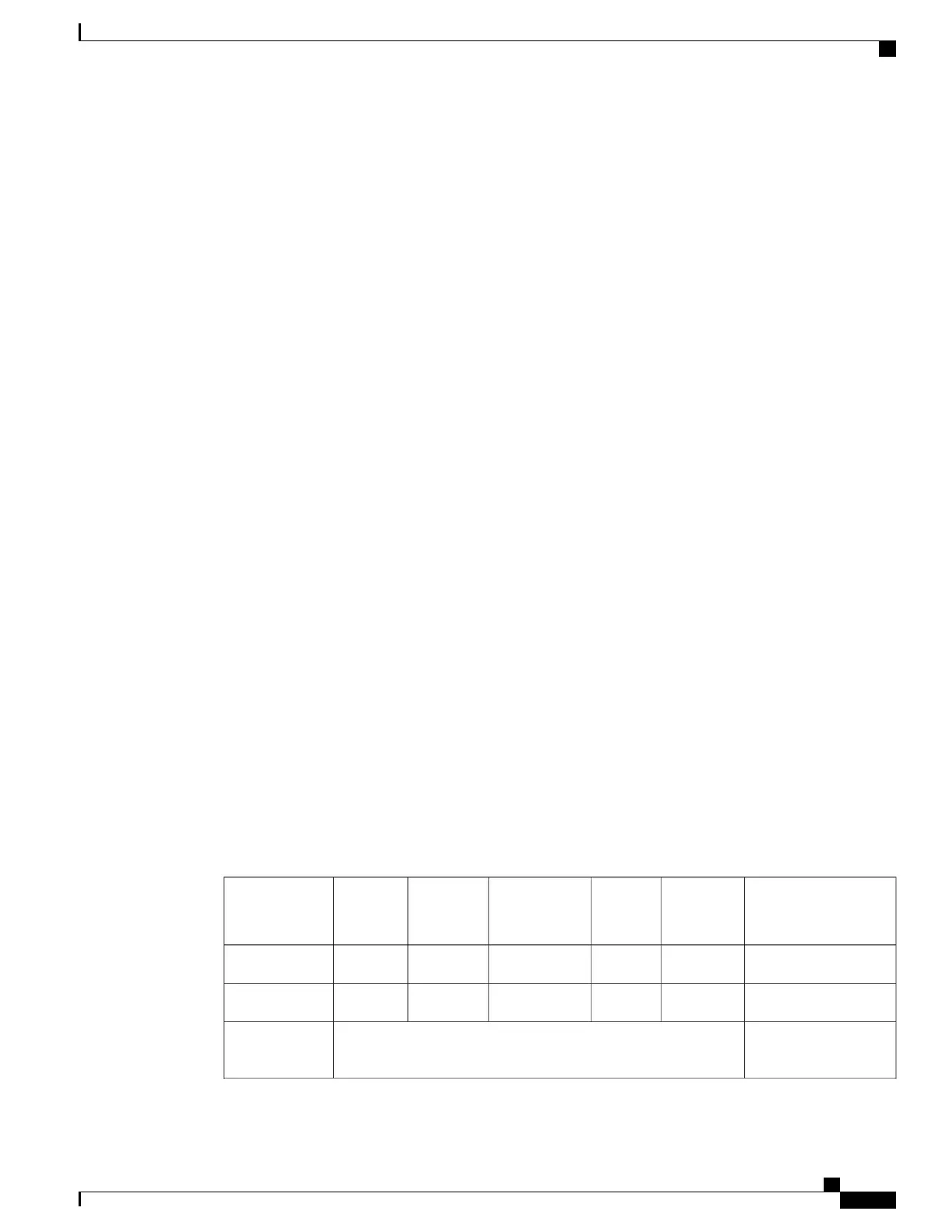Generated Auto-QoS Configuration
By default, auto-QoS is disabled on all ports. Packets are not modified--the CoS, DSCP and IP precedence
values in the packet are not changed.
When you enable the auto-QoS feature on the first port of the interface:
•
Ingress packet label is used to categorize traffic, to assign packet labels, and to configure the ingress
and egress queues.
•
QoS is globally enabled (mls qos global configuration command), and other global configuration
commands are automatically generated. (See Examples: Global Auto-QoS Configuration, on page 655).
•
Switch enables the trusted boundary feature and uses the Cisco Discovery Protocol (CDP) to detect the
presence of a supported device.
•
Policing is used to determine whether a packet is in or out of profile and specifies the action on the
packet.
VoIP Device Specifics
The following activities occur when you issue these auto-QoS commands on a port:
•
When you enter the auto qos voip cisco-phone command on a port at the network edge connected to a
Cisco IP Phone, the switch enables the trusted boundary feature. If the packet does not have a DSCP
value of 24, 26, or 46 or is out of profile, the switch changes the DSCP value to 0. When there is no
Cisco IP Phone, the ingress classification is set to not trust the QoS label in the packet. The policing is
applied to the traffic matching the policy-map classification before the switch enables the trust boundary
feature.
•
When you enter the auto qos voip cisco-softphone interface configuration command on a port at the
network edge that is connected to a device running the Cisco SoftPhone, the switch uses policing to
determine whether a packet is in or out of profile and to specify the action on the packet. If the packet
does not have a DSCP value of 24, 26, or 46 or is out of profile, the switch changes the DSCP value to
0.
•
When you enter the auto qos voip trust interface configuration command on a port connected to the
network interior, the switch trusts the CoS value for nonrouted ports or the DSCP value for routed ports
in ingress packets (the assumption is that traffic has already been classified by other edge devices).
Table 74: Traffic Types, Packet Labels, and Queues
All Other TrafficReal-Time
Video
Traffic
STP
BPDU
Traffic
Routing
Protocol
Traffic
VoIP
Control
Traffic
VoIP Data
Traffic
–
34564824, 2646DSCP value
–
37635CoS value
0, 1, 2, 3, 6, 7(queue 1)4, 5 (queue 2)CoS-to-Ingress
queue map
Consolidated Platform Configuration Guide, Cisco IOS Release 15.2(4)E (Catalyst 2960-X Switches)
647
Information about Configuring Auto-QoS
